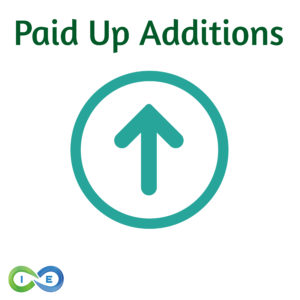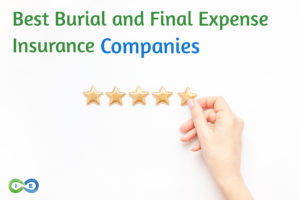As you explore the realm of life insurance, you might find yourself considering modified whole life insurance, a unique option tailored to fit those who anticipate a future increase in disposable income. Modified whole life insurance is a type of policy that starts with lower premiums in the introductory period, offering you an affordable entry point, and then transitions to higher fixed premiums after a set period. It’s designed to provide the stability and lifelong coverage of whole life insurance, while also accommodating your current financial situation and future expectations, making it an intriguing choice for securing your financial legacy without overburdening your present budget.
Table of Contents
- Key Takeaways
- Introduction to Modified Whole Life Insurance
- Whole Life Insurance
- What is Modified Whole Life Insurance?
- Modified Benefit Whole Life vs Modified Whole Life Insurance
- Comparing the Cost of Modified vs. Fixed Premium Whole Life Insurance
- Example Whole Life Insurance Rates
- Modified vs. Fixed Whole Life Insurance Cash Value
- Why Buy Modified Whole Life Insurance?
Key Takeaways
- Modified Whole Life Insurance: Offers an introductory period of lower premiums, which then adjust to a higher amount after a predetermined time, such as five or ten years, while maintaining the same death benefit throughout the policy’s life.
- Cash Value Growth: The cash value accumulation in a modified whole life policy grows more slowly during the initial period of lower premiums . Cash value can be accessed through loans or surrender value, similar to traditional whole life policies.
- Modified vs. Limited Pay Life: It’s important to differentiate between modified whole life insurance, which adjusts premiums after an initial period, and limited pay life insurance, where premiums are paid for a set period, after which no further premiums are due.
- Modified Benefit Whole Life Insurance: Modified benefit is a variant of whole life and often includes a waiting period where the full death benefit is not immediately effective, designed to provide coverage for those who might not qualify due to pre-existing conditions.
- Choosing Modified Whole Life Insurance: It may be suitable for individuals expecting an increase in disposable income in the future, allowing for higher coverage with more affordable rates initially, followed by higher premiums later on. However, other whole life insurance policy designs may provide similar benefits, so consulting with a professional is advised.
Introduction to Modified Whole Life Insurance
The top dividend paying whole life insurance companies understand that they can expand their customer base by offering financial products designed to benefit people in a variety of situations. Standard whole life insurance is well-suited to applicants in many phases of life.
For people whose financial circumstances make traditional whole life insurance difficult to obtain due to higher premiums, modified whole life insurance policies can provide a means of securing the protection and stability of whole life under a slightly different payment structure for individuals who want or need to save a little on whole life insurance rates early one.
Whole Life Insurance
Whole life is permanent life insurance guaranteed to retain the same death benefit for the entire life of the insured. A whole life policy won’t expire or lapse (other than for failure to pay premiums), and, in most cases the premiums are fixed. So, the insurance company won’t increase the premiums as the insured gets older, in contrast to when a term life policy renews or a universal life policy is underfunded.
Cash Value
A defining trait of whole life insurance is that it has cash value. Whole life is a financial asset, allowing the cash value to be accessed when needed and can be used as collateral for a life insurance loan. And if you decide you no longer require life insurance, you can surrender the policy, and the insurance company will hand you a check for the cash surrender value.
The precise policy terms of whole life insurance vary among policies and between insurers, and most life insurance companies offer a wide variety of paid up addition riders that (usually in exchange for additional premium) are intended to increase a policy’s practical value and tailor it to the policyholder’s specific needs.
Whole Life Paid Up Additions Rider
What is Modified Whole Life Insurance?
Modified (or “modified premium”) whole life insurance is whole life insurance with a slight variation. Where a traditional whole life policy features fixed premiums throughout the duration of the policy, a modified whole life insurance policy starts out with lower premiums and adjusts to higher premiums after an initial period. Other than the revised premium structure, starting out lower and then adjusting to higher premiums, a modified whole life insurance policy will otherwise look very similar to standard whole life insurance.
Now, modified whole life insurance isn’t like a mortgage with an adjustable rate. The premium rate doesn’t float and isn’t adjusted every year. Instead, there’s usually only one or two premium adjustments, and higher premium adjustment comes at a predetermined time—usually either five or ten years after the policy is originally issued.
Policy documents will clearly identify how long the starting period lasts. And, after any applicable increasing premium adjustment has occurred, the modified whole life insurance policy’s premiums are fixed for the rest of the insured’s life.
During the modified-premium period after the policy is first issued, modified whole life insurance will have lower premium payments compared to a traditional whole life policy with the same death benefit. Then, after the premium payments are adjusted, the modified whole life policy’s premiums are higher than what you would get with a comparable fixed-rate whole life insurance policy.
So, lower premiums up front, higher premiums on the back-end.
What it boils down to is that you get decreased premiums for five or ten years, and, in exchange, you agree to pay increased premiums for the duration of the policy.
Importantly, the face amount (i.e., the death benefit paid to the beneficiary upon the insured’s death) stays constant during and after the modified period. It remains the same whole life insurance policy with the same death benefit amount. It just costs less for the first few years.
Modified Whole Life vs Limited Pay Life
It should be noted that modified whole life insurance is different from limited pay life insurance, where the premium is set for a specific period of years, after which time no more premiums are due. Another example of how there are many different ways to design a whole life insurance policy and the need for expert guidance to make sure you get the best policy design for you, based on your specific needs and goals.
Modified Benefit Whole Life vs Modified Whole Life Insurance
Somewhat confusingly, the term modified whole life insurance is sometimes also used to describe final expense whole life insurance policies with a waiting period (usually two years or so) during which the policy’s full death benefit is not yet effective.
With these modified-benefit whole life insurance policies, the premiums are fixed, but the benefit amount changes. They usually work in one of two ways if the insured dies during the waiting period.
Either the payout upon death is measured as a total refund of all premiums paid on the policy, with interest (“return of premium”).
Or the payout is measured as a percentage (often 25 – 50%) of the policy’s full coverage level (“graded benefit”).
And note, once the waiting period ends, the full coverage amount kicks in.
Guaranteed Issue
Modified-benefit whole life insurance policies frequently provide “guaranteed acceptance” coverage (i.e., an applicant cannot be denied), marketed as final expense insurance (or “funeral insurance” or “burial insurance”).
We’ve examined final expense insurance generally and guaranteed acceptance life insurance specifically in other articles. So, here, we will focus primarily on modified whole life insurance.
However, it’s worth noting that modified-benefit whole life policies with guaranteed acceptance can provide a path to obtaining life insurance for people who might not otherwise be able to qualify due to a preexisting medical condition.
Why a Waiting Period?
Life insurance companies are hesitant to cover applicants with certain health problems out of fear that the insured will die early and the company will have to pay out a big death benefit on a policy that hasn’t contributed much premium.
Waiting periods alleviate that concern by ensuring that at least a couple years of premiums will be paid into the policy before the total benefit amount is paid out, which allows the insurance company to offer coverage to individuals who would otherwise be ineligible due to a significant medical condition.
Any time a life insurance policy is “guaranteed acceptance” and has no medical underwriting, the whole life insurance rates are going to be higher than with a medically underwritten policy. The sooner the insurer anticipates paying out a death benefit, the higher the premiums will be.
Modified-premium life insurance works the other way—the insurer is willing to accept a reduced premium early on if it believes there is a relatively low risk of an early payout.
Comparing the Cost of Modified vs. Fixed Premium Whole Life Insurance
The altered premium structure that comes with modified whole life insurance raises a somewhat obvious question: ‘do you end up paying more in total premiums for a standard whole life policy or for a modified whole life policy?’ Unfortunately, it’s impossible to say for sure either way on the day a policy is issued because the answer depends on how long the insured person ends up living.
If the insured dies during the modified period—or doesn’t live much longer after the conclusion of the period—a modified whole life insurance policy will be considerably less expensive. In those scenarios, the policyholder pays less premium for the same death benefit, so modified whole life insurance was a great choice.
On the other hand, if the insured lives well past the end of the modified period and exceeds his or her life expectancy, then the classic whole life insurance policy with fixed premiums will end up costing less in aggregate premium payments.
The longer the insured lives, the more premiums must be made at the higher post-adjustment rate. Eventually, the higher back-end payments catch up with the early savings, making fixed premium whole life insurance superior to modified whole life insurance.
Example Whole Life Insurance Rates
| Age | $100,000 | $250,000 | $500,000 | $1,000,000 |
|---|---|---|---|---|
| 20 | $83 | $151 | $293 | $580 |
| 25 | $92 | $178 | $348 | $689 |
| 30 | $105 | $216 | $422 | $839 |
| 35 | $121 | $267 | $522 | $1038 |
| 40 | $141 | $326 | $639 | $1273 |
| 45 | $173 | $401 | $789 | $1571 |
| 50 | $214 | $499 | $982 | $1959 |
| 55 | $270 | $629 | $1239 | $2473 |
| 60 | $324 | $802 | $1582 | $3158 |
| Age | $100,000 | $250,000 | $500,000 | $1,000,000 |
|---|---|---|---|---|
| 20 | $56 | $132 | $255 | $504 |
| 25 | $66 | $156 | $304 | $602 |
| 30 | $79 | $188 | $368 | $729 |
| 35 | $96 | $230 | $450 | $894 |
| 40 | $115 | $278 | $544 | $1081 |
| 45 | $143 | $350 | $685 | $1364 |
| 50 | $175 | $429 | $843 | $1681 |
| 55 | $223 | $549 | $1082 | $2158 |
| 60 | $280 | $700 | $1381 | $2756 |
Modified vs. Fixed Whole Life Insurance Cash Value
The comparative cash value of fixed-premium whole life versus modified whole life is another factor worth considering. Whole life insurance policies—whether the premiums are modified or fixed–accrue cash value that steadily increases the longer the policy remains in place.
Cash value can be borrowed against for a low-interest loan, cashed in by surrendering the policy, or rolled over into an annuity at retirement. So, cash value is a bona fide asset and definitely needs to be weighed when comparing life insurance policies.
Less Cash Value Initially
When a policy has modified premiums, cash value accrues more slowly at first than a comparable policy with fixed premiums. Less cash is paid into the modified whole life insurance policy upfront, so there’s less available to apply toward cash value and to earn interest.
After premiums are adjusted and payments increase, the policy’s cash value will start building more quickly but those early years of lower premiums will be difficult to make up. Once again, fixed premium whole life insurance is the clear winner versus modified whole life insurance.
Dividends
A modified whole life insurance policy may still receive life insurance dividends from the insurance company. And the dividends can still be taken as cash, applied to future premiums, or put back into the policy to increase its value. However, life insurance dividends will be smaller during the modified period compared to a fixed-premium whole life policy from the same insurer. Like cash value, dividends will increase after the modified period.
Why Buy Modified Whole Life Insurance?
Modified whole life insurance may be a good option for younger applicants who anticipate having more disposable income down the road. In this situation, the modified premiums allow for higher coverage levels with more affordable rates early on. Then, premiums increase during later, higher-earning years.
In most situations we would recommend a properly designed whole life insurance policy with fixed premiums, blending base premium with paid up additions, so that you get the most efficient policy, that focuses on cash value growth.
Discover if Modified Whole Life Insurance is Right for You
Before choosing a life insurance policy, get a personalized consultation from our independent advisory team. We’ll help you determine if modified whole life insurance aligns with your current budget and future financial goals.
- ✓ Receive a tailored analysis of modified whole life for your situation
- ✓ Compare modified whole life to fixed premium and other insurance options
- ✓ Understand premium adjustments, cash value growth, and dividends
- ✓ Get expert guidance on securing affordable, lifelong coverage
Schedule your complimentary 30-minute modified whole life consultation today to build a secure financial legacy.
No obligation. No sales pressure. Just expert guidance to help you decide if modified whole life insurance is the right fit for your financial future.





